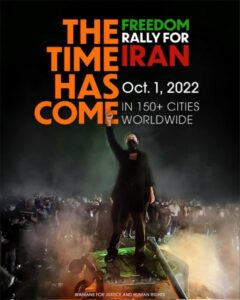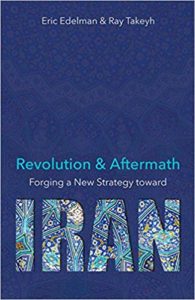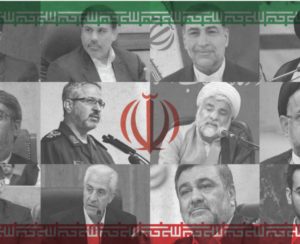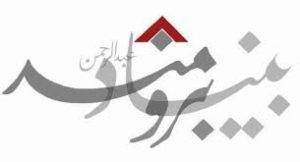Very composed #TurbanTossingpic.twitter.com/4Nd1lSeoyN
— 1500tasvir_en (@1500tasvir_en) November 9, 2022
Russia’s national security chief visiting Iran discussed Ukraine and ways to combat “Western interference” in their internal affairs with his Iranian counterpart, reports suggest. Nikolai Patrushev, a close ally of President Vladimir Putin met with Ali Shamkhani, the secretary of Iran’s Supreme National Security Council in a subsidiary meeting of what analyst Anne Applebaum calls Autocracy, Inc.

In 2015, General Qassem Suleimani, the architect of Iran’s foreign military strategy, travelled to Moscow to see Putin with a pitch—and a plea for Russian intervention. As Russia loses territory, thousands of troops, and massive amounts of weaponry in its war in Ukraine, Iran is now returning the favor, a senior Biden Administration official told me this week, the New Yorker’s Robin Wright observes.
As relations between Moscow and Tehran intensify, Putin’s government is advising the Iranian regime on “best practices” to put down the protests that have swept dozens of cities and more than a hundred university campuses since September 16th, the White House said last week, she adds:
Russia is drawing on its own “extensive experience in suppressing open demonstrations,” Karine Jean-Pierre, President Biden’s press secretary, said. “Iran and Russia are growing closer the more isolated they become.” The protests are the most significant challenge to the theocracy in more than a decade. …Tehran has announced plans to prosecute a thousand people, mainly young protesters, on charges ranging from disrupting public order to “corruption on earth,” a vague offense that can carry the death penalty.
Former government spokesman Ali Rabiei warned that there might be “bloody confrontations” ahead as Iran’s nationwide uprising rages. Rabiei, a long-time member of the Islamic Republic’s intelligence community, wrote in a commentary in the reformist Etemad newspaper that some officials have marginalized “moderates” in a move likely to facilitate Iran’s destruction by exacerbating fault-lines in Iranian society.
 He argued that hardliners “are exerting maximum pressure” to disrupt mediation efforts and are aiming to systematically weaken civil society and influential reference groups.
He argued that hardliners “are exerting maximum pressure” to disrupt mediation efforts and are aiming to systematically weaken civil society and influential reference groups.
Iranians are “gonna free themselves pretty soon,” said President Joe Biden, expressing solidarity with the protestors.
But the U.S. “must go further,” said Tzvi Kahn, a Research Fellow and Senior Editor at the Foundation for Defense of Democracies. “The White House should explicitly revoke its offer of sanctions relief to Iran. Washington must not provide an economic lifeline to a regime that continues to massacre its own people.”
Iran’s Army Ground Forces Commander said on Wednesday that “rioters” would have no place in the Islamic Republic if the country’s Supreme Leader Ayatollah Ali Khamenei ordered a tougher crackdown on nationwide protests, Reuters reports:
While past demonstrations have focused on election results or economic hardships, the current protesters seem determined to secure an entirely new political order in a country where the clerical establishment has ruled since the 1979 revolution. In an ongoing act of resistance, videos posted on Twitter under the hashtag of #TurbanTossing [above] show Iranians sneaking up behind clerics and knocking turbans off their heads.
 The protests and strikes at Iran’s universities and schools demonstrate the regime’s failure to instill its Islamist ideology in over four decades, experts suggest.
The protests and strikes at Iran’s universities and schools demonstrate the regime’s failure to instill its Islamist ideology in over four decades, experts suggest.
The Iranian leadership is resisting growing demands from clerics and some reformist politicians to stage a new referendum on Iran’s constitution as hardline parliamentarians meanwhile insist the only response to the recent unrest sweeping the country is for violent protesters to be executed, the Guardian adds:
In a largely leaderless revolution, clerics and some students are making demands that the regime try to resolve the crisis by holding an immediate referendum with the presence of international observers. The original Iranian revolution in 1979 was endorsed by a simple referendum in which all Iranians aged over 16 were asked: “Should Iran be an Islamic Republic?”
The call for a new referendum was first made by Iran’s leading Sunni cleric Molavi Abdulhamid, who is based in the south-eastern city of Zahedan. “Hold a referendum and see what changes people want and accept whatever the wishes of the people. The current policies have reached a dead end,” he said.

Credit: FDD
Amidst protests in northwest Iran over Amini’s death, Iran’s Islamic Revolutionary Guards Corps (IRGC) attacked sites of dissident Iranian Kurdish groups stationed between the governorates of Erbil and Sulaymaniyah in the Kurdish Region of Iraq (KRI), adds analyst Tamer Badawi.
Iran accuses exiled Iranian Kurdish insurgent groups of fueling the recent insurrection in the country’s northwest. The resulting attacks using precision-missiles and suicide drones left 14 dead, including a US citizen, and 58 wounded. The unification of the Kurdistan Democratic Party—Iran (KDP-I)—and the Democratic Party of Iranian Kurdistan (PDKI) in August 2022 has likely signaled to Tehran potential insurgent escalation, he writes for Carnegie’s Sada bulletin.
 The Abdorrahman Boroumand Center works to uphold human rights in Iran and attain democracy through “education and the dissemination of information,” adds BORGEN magazine. It seeks to protect the rights of all Iranians indiscriminately by documenting and publicizing every execution and assassination incident in Farsi and English. These stories are contained in the Center’s Omid database, a memorial of the people who have faced human rights violations in Iran and were deprived of “the right to life.”
The Abdorrahman Boroumand Center works to uphold human rights in Iran and attain democracy through “education and the dissemination of information,” adds BORGEN magazine. It seeks to protect the rights of all Iranians indiscriminately by documenting and publicizing every execution and assassination incident in Farsi and English. These stories are contained in the Center’s Omid database, a memorial of the people who have faced human rights violations in Iran and were deprived of “the right to life.”







